“The greatest danger in times of turbulence is not the turbulence; it is to act with yesterday’s logic.” – Peter Drucker
The evolution of writing with AI technologies raises a critical question: Can QuillBot detect AI-generated content from platforms like ChatGPT? QuillBot’s AI capabilities are designed to identify content from various AI writing tools, including ChatGPT, GPT-4, and Google Gemini1. This has led to concerns among educators and writers about the reliability of AI detection software. This article delves into QuillBot’s functionalities and compares it to other detection tools. It sheds light on the dynamic nature of AI in the writing world.
Key Takeaways
- QuillBot claims to effectively detect AI content generated by platforms like ChatGPT.
- AI detection software relies on advanced algorithms to analyze text for originality.
- Turnitin has a reported accuracy of 98% when identifying AI-generated content, including paraphrased text from QuillBot2.
- Understanding the limitations of AI detection tools is crucial for their effective use.
- Ethical considerations play a significant role in how AI technologies are applied in writing.
Introduction to QuillBot and ChatGPT
AI writing tools are advancing rapidly, making it vital to grasp the capabilities of QuillBot and ChatGPT. QuillBot stands out as a leading paraphrasing tool, offering QuillBot’s features to improve written content. It provides a range of functionalities, including grammar checks and plagiarism detection, aiding writers in perfecting their work.
Overview of QuillBot’s Features
QuillBot’s features aim to streamline the writing process. It offers various paraphrasing modes tailored to individual writing styles. This customization helps writers enhance their text while ensuring it remains original. However, tests have revealed QuillBot’s limitations in avoiding detection by plagiarism systems like Turnitin, which quickly identifies AI-generated content3.
Moreover, QuillBot’s ability to generate new sources raises concerns about the authenticity of the content it produces3.
Introduction to ChatGPT Technology
ChatGPT technology marks a significant advancement in AI’s role in natural language processing. It excels in creating coherent and contextually relevant text, suitable for both casual chats and structured content. However, its writing style can sometimes be identified by plagiarism detectors3.
Understanding how these tools operate is essential within the realm of AI writing services.
The Functionality of QuillBot

QuillBot is a cutting-edge AI writing tool, utilizing sophisticated algorithms to boost text quality and versatility. It streamlines the writing process by generating multiple versions of input content. This ensures the original meaning is kept intact while enhancing fluency. Understanding QuillBot’s core functionalities helps users maximize its potential.
How QuillBot Works
QuillBot analyzes the text provided by users to create rephrased alternatives. It identifies themes and context to keep the original intent while improving structure and style. This makes QuillBot a vital tool for both academic and professional writing.
Key Uses of QuillBot
QuillBot excels in enhancing clarity and conciseness. It is often used for creating summaries, offering synonyms, or refining writing for better readability. Its versatility makes it ideal for various on-demand writing tasks across different fields.
Limitations of QuillBot
While QuillBot offers many benefits, it also has limitations. The rephrased outputs might appear repetitive or lack the subtlety of human writing. Users may find the results too formulaic, requiring further edits to match their personal writing style.
QuillBot’s blend of features aims to enhance writing quality, despite inherent limitations.456,,
Understanding ChatGPT
ChatGPT has become a key player in the AI writing field, thanks to its unique features and wide range of capabilities. It excels in creating coherent and contextually relevant text, making the writing process more efficient. This section explores what makes ChatGPT unique, its applications, and the crucial role AI plays in writing.
What Makes ChatGPT Unique
ChatGPT stands out due to its ability to engage in natural, context-aware conversations. Unlike traditional text generators, it can maintain context over multiple exchanges. This offers responses that feel cohesive and relevant. Such a capability is invaluable for creative writing, customer service, and more, where context understanding is key.
Applications of ChatGPT
The applications of ChatGPT span a wide range. It’s used in education for tutoring, helps in creating marketing content, and assists writers in crafting articles and stories. With the integration of tools like QuillBot, ChatGPT can improve writing quality by adapting content to avoid AI detection7.
Moreover, its collaboration with tools like Turnitin and Copyscape underscores the growing significance of AI in ensuring content originality and adapting writing styles effectively8.
The Importance of AI in Writing
The role of AI in writing is immense. It boosts productivity by generating content quickly, allowing writers to concentrate on creativity and innovation. This shift has led to a reevaluation of writing processes, focusing on automation while keeping a personal touch. Ethical concerns around authenticity and authorship are becoming more pressing as AI tools become more widespread8. As AI continues to evolve, finding a balance between human creativity and machine assistance will define the future of content creation.
Comparison of Text Detection Tools
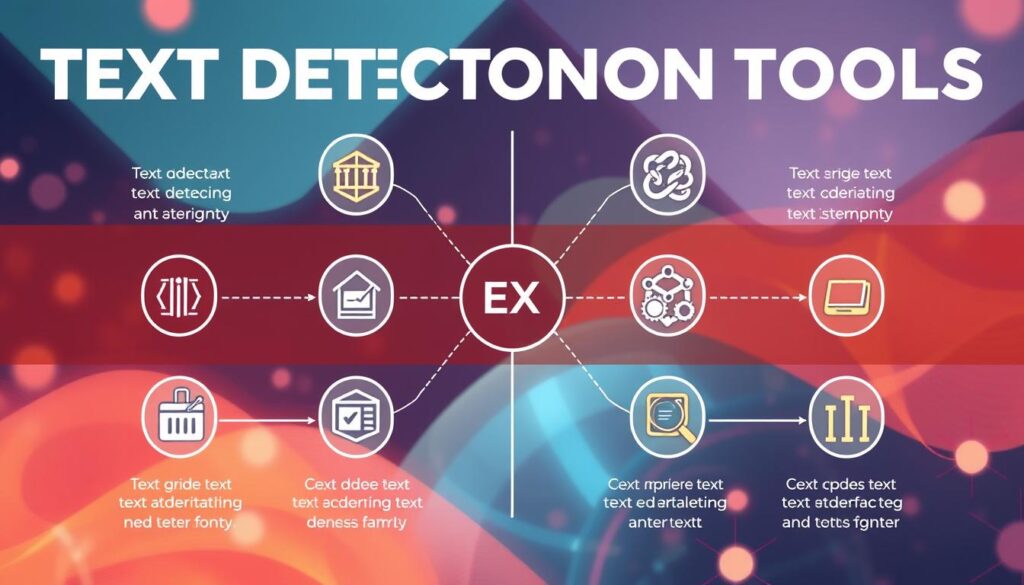
In the evolving landscape of AI text detection, a comparison of text detection tools reveals significant differences in effectiveness. Various tools employ unique methodologies to assess the likelihood that a piece of text is AI-generated or human-written. Users often express concerns about the AI detection accuracy across different platforms, especially when dealing with mixed content that challenges detection algorithms.
QuillBot vs. Other Detection Tools
QuillBot, known for its paraphrasing capabilities, faces challenges in identifying AI-generated text effectively. It scored an average AI score of 91%, compared to Surfer AI’s 98% for similar content9. In identifying human-written content, QuillBot scored a mere 10%, while Turnitin scored 13%9. Moreover, QuillBot failed to identify mixed content as AI, scoring 0%, highlighting its detection weaknesses9. In contrast, Hive AI moderator achieved a 99.9% accuracy in detecting AI-written content9.
Effectiveness of AI Detection
Detection accuracy varies significantly among available tools. The GPT-2 Output Detector achieved a 99.98% accuracy in recognizing fake text, while QuillBot scored lower, indicating 42% to 83% of its content could be AI-generated4. Platforms like Undetectable.ai offer superior capabilities, bypassing detection algorithms effectively, ensuring a more reliable approach to handling AI-generated materials10.
Understanding these differences and the QuillBot detection capabilities is crucial for making informed decisions about text authenticity checks. It highlights the importance of choosing the right tool based on specific needs.
The Science of Text Analysis
Understanding the science behind text analysis is key to seeing how AI writing tools work. Natural Language Processing (NLP) is crucial, enabling software to grasp and manipulate human language. Advanced algorithms in NLP allow for the analysis of written content, making sure tools like QuillBot and ChatGPT produce coherent text. Recent advancements have made QuillBot’s paraphrasing tool detectable by Turnitin’s algorithms, showing the growth in machine learning text analysis11.
Natural Language Processing Explained
NLP employs various techniques to teach machines about context, syntax, and semantics in human language. This tech is vital for understanding user queries and crafting meaningful responses. The success of AI writing tools in processing and responding to written communication hinges on these NLP methods, which have greatly improved over time. For example, Turnitin’s updated detection can now score text segments based on AI generation likelihood11. NLP’s applications have also broadened, supporting multiple languages and contexts11.
Machine Learning in Text Detection
Machine learning enhances NLP by enabling algorithms to learn from vast datasets and spot patterns over time. This is crucial for distinguishing between human-written and AI-generated text. Studies reveal that text detection tools can accurately identify AI content, though with varying success. For instance, some tools correctly identified human text 96% of the time but struggled with AI-generated material under edited conditions12. These findings highlight the capabilities and limitations of current AI detection methods.
Can QuillBot Identify AI-Generated Text?

QuillBot’s detection algorithms aim to spot AI-generated text, using complex methods to tell original content from AI-produced material. Its success varies, with studies showing mixed results in identifying AI writing. Some tools, like Turnitin, claim up to 98% accuracy in detecting AI texts. Yet, they might miss certain instances, especially if the content closely mimics human writing1314.
Detection Algorithms Used
QuillBot’s algorithms analyze text structure and style through metrics like perplexity and burstiness. Low perplexity often points to AI-generated content, while high burstiness suggests human writing. Despite being a popular tool for rewriting and summarizing, QuillBot sometimes produces nonsensical phrases or alters meanings1314.
Specific Cases of Detection Success
Practical tests showed QuillBot’s detection abilities alongside other AI tools. For example, about 70% of QuillBot’s paraphrased texts were flagged as AI-generated by Turnitin13. In contrast, Copyscape and Grammarly detected less, showing differences in their algorithms14. These cases highlight QuillBot’s strengths and weaknesses in identifying AI content.
Limitations of QuillBot’s Detection Capabilities
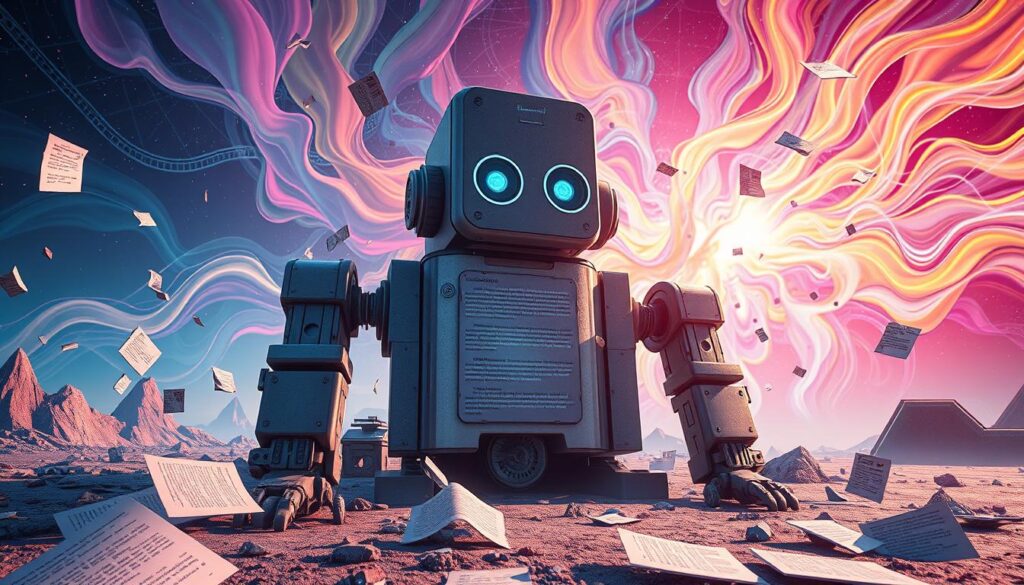
QuillBot excels in rewriting content but faces limitations in its detection abilities. These issues arise from several factors, including the complexity of the text and the extent of changes made. When AI content is heavily edited by humans, it becomes hard for algorithms to distinguish between human and AI writing.
Factors Influencing Detection
The success of QuillBot’s detection depends on various factors. The complexity and context of the text are crucial in determining detectability. As detection technology improves, it aims to identify AI-specific writing patterns. Writers can use these tools to create more authentic content, blending AI with personal touch. Tools like Turnitin and Copyscape enhance detection by better distinguishing between writing styles.
Accuracy and Reliability Concerns
There are concerns about QuillBot’s ability to accurately detect human versus AI-generated content. Tools like Turnitin offer similarity reports but may miss the subtleties of advanced paraphrasing. Despite high accuracy levels, AI detectors struggle with the complexity of human creativity. Users must be aware of these limitations when using QuillBot’s detection tools81516.
User Experiences with QuillBot

User experiences with QuillBot show a blend of satisfaction and areas needing improvement in AI detection. Many writers share how QuillBot boosts their productivity and helps in crafting top-notch content. Their feedback highlights the tool’s strengths and its limitations in certain academic settings.
Feedback from Writers
Feedback from writers points out QuillBot’s value for professional writers and content creators. They praise its wide range of paraphrasing options and time-saving features that elevate text quality. Additionally, non-native English speakers benefit from its grammar checks and summarizing tools, which greatly improve their writing abilities on complex subjects17.
Many users report a positive experience, citing QuillBot’s ease of use and effectiveness in generating unique content.
Testimonials on Detection Accuracy
Testimonials on AI detection reveal some limitations, yet users agree QuillBot significantly lowers detection chances. Though it can’t ensure complete evasion, its approach to synonym substitution and sentence reorganization places it among the best tools available18. Advocates suggest combining QuillBot with manual editing for the best results. This approach ensures content remains unique while leveraging QuillBot’s advantages.
The Future of AI Text Detection

The landscape of AI text detection is rapidly evolving, driven by AI technology trends. Innovations aim to boost accuracy and reliability, leading to better outcomes. The demand for precision is growing, setting the stage for advancements that could transform the effectiveness of tools like QuillBot.
Trends in AI Technology
The emergence of AI-generated content has spurred the creation of advanced detection tools. Models like ChatGPT and GPT-4 produce content quickly but lack human-like quality, making them detectable19. QuillBot, by paraphrasing text, helps mask AI origins. However, it faces challenges such as mechanical phrases and structural rigidity in AI outputs19.
Potential Upgrades for QuillBot
QuillBot’s future upgrades might include advanced algorithms to recognize human writing nuances. These improvements could enhance the platform’s ability to detect AI-generated text more effectively. This evolution will empower users with better content generation and support academic integrity efforts20. Ensuring fairness and accuracy, especially in marginalized communities, will be crucial as AI detection tools advance20.
Ethical Considerations

AI technologies are transforming creative writing, raising ethical considerations of AI to the forefront. Writers and educators must grapple with the use of tools like QuillBot and ChatGPT. This is especially true when it comes to plagiarism issues and maintaining originality. It’s crucial to tread this path with care, ensuring AI enhances, not diminishes, authenticity and integrity.
Plagiarism vs. AI-Generated Content
AI tools, like QuillBot, which can rewrite and produce content, heighten plagiarism concerns. Its advanced features, such as paraphrasing and summarization, pose ethical challenges regarding authorship and citation. The risk of creating content that evades plagiarism detection systems, like Turnitin, raises accountability questions in academic and professional realms. Misuse could lead to severe penalties, including failing grades or disciplinary actions21.
Debates on plagiarism are especially critical with AI-generated content. It may be seen as dishonest work, posing significant risks8.
The Role of AI in Creativity
AI’s role in creativity challenges traditional notions of original work. Tools like ChatGPT can mimic human writing, making authorship ambiguous. This blurs the line between human creativity and AI assistance, prompting a reevaluation of what creativity in writing entails22.
As AI’s role in creative writing grows, striking a balance between technology use and preserving human artistry is essential. Proper attribution and acknowledging human-AI collaboration are key to upholding ethical standards in writing.
QuillBot for Educators and Students
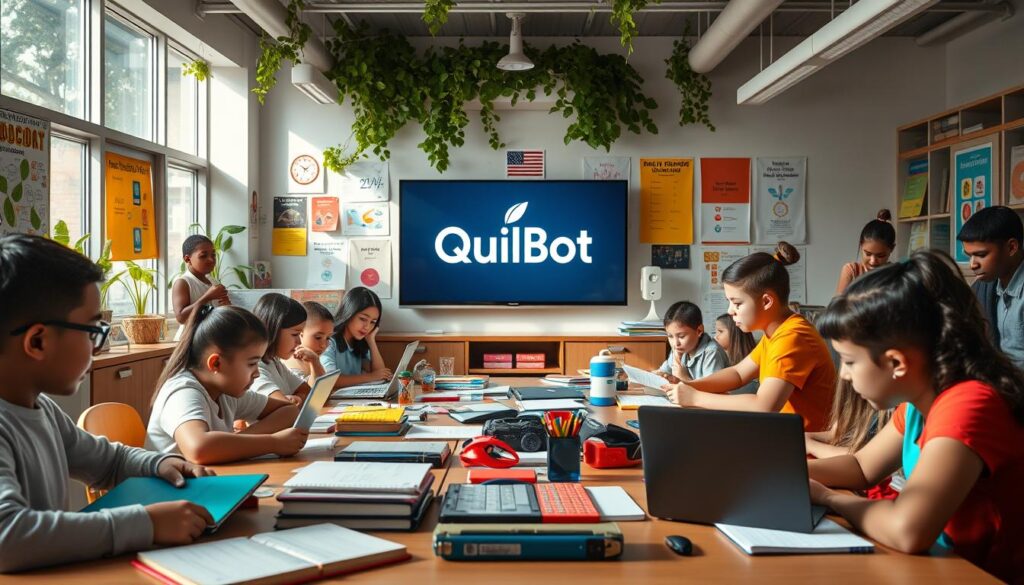
QuillBot plays a crucial role in educational environments, offering tools for both students and educators. It’s an AI-powered paraphrasing tool that allows users to rewrite, enhance, and transform content easily23. Its affordability makes it suitable for various writing tasks, from academic assignments to business communication23. It promotes effective paraphrasing and proper citation, aiding in plagiarism prevention.
Using QuillBot for Plagiarism Prevention
This tool is a significant aid in plagiarism prevention, essential for maintaining academic integrity. QuillBot helps students create original content and understand proper information incorporation. It enhances writing skills and reduces the risk of academic integrity issues.
Impact on Academic Integrity
QuillBot supports academic integrity through its features, but its misuse is a concern. Some students might use it to avoid traditional learning, not to improve their understanding. Educators must be watchful, as the distinction between ethical use and avoiding academic integrity issues is thin. Teaching students to use QuillBot responsibly is key to fostering a culture of responsible writing.
Exploring Alternative Solutions

The AI-generated text landscape is constantly evolving, making effective detection tools crucial. Users are now exploring alternatives to QuillBot, looking for tools that better meet their needs. Tools like Turnitin and Originality.ai offer unique features that can either complement or compete with existing software.
Other Tools to Detect AI-Written Text
Turnitin, known for plagiarism detection, has added AI detection capabilities. It claims to detect AI-generated content with up to 87% accuracy. Originality.ai, meanwhile, specializes in identifying AI-generated content, helping users distinguish between human and AI-written text.
Pros and Cons of Alternative Options
The pros and cons of detection software vary by tool. Turnitin’s large database aids in identifying plagiarized or AI-generated content, making it a top choice for educators. However, its slower processing speed might be a drawback for some. Originality.ai excels in quick analysis and high accuracy for specific AI models. Yet, its effectiveness may decrease with complex or multi-authored texts. Users must weigh these factors to choose the best AI detection tool for their needs2425.
Conclusion on QuillBot and ChatGPT Detection
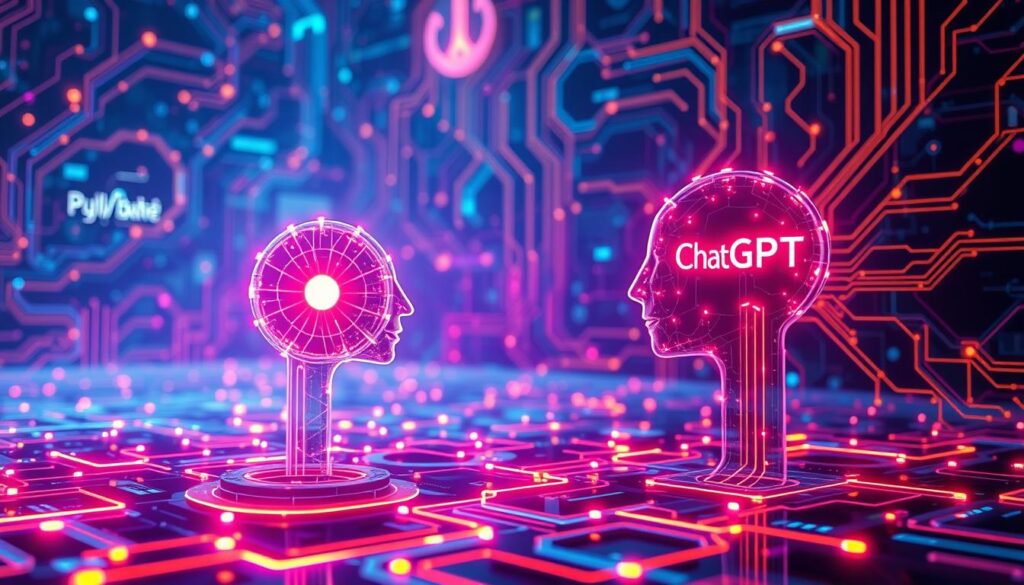
QuillBot emerges as a robust online writing tool, capable of rewriting text, summarizing articles, checking grammar, and detecting plagiarism26. Its performance in AI detection is varied; while three detection systems flagged QuillBot text as entirely AI-generated, others detected it minimally26. This scenario underscores the dynamic nature of detection algorithms and their capacity to differentiate between human and AI-generated content8.
Reflecting on AI tools, it’s crucial to grasp their strengths and weaknesses. QuillBot might not evade stricter detection algorithms consistently, prompting users to explore other options like Essaydone for certain requirements268. As AI evolves, it raises ethical concerns about authorship and content integrity. This calls for a balance between leveraging AI for writing and maintaining personal touch in our work.
Frequently Asked Questions
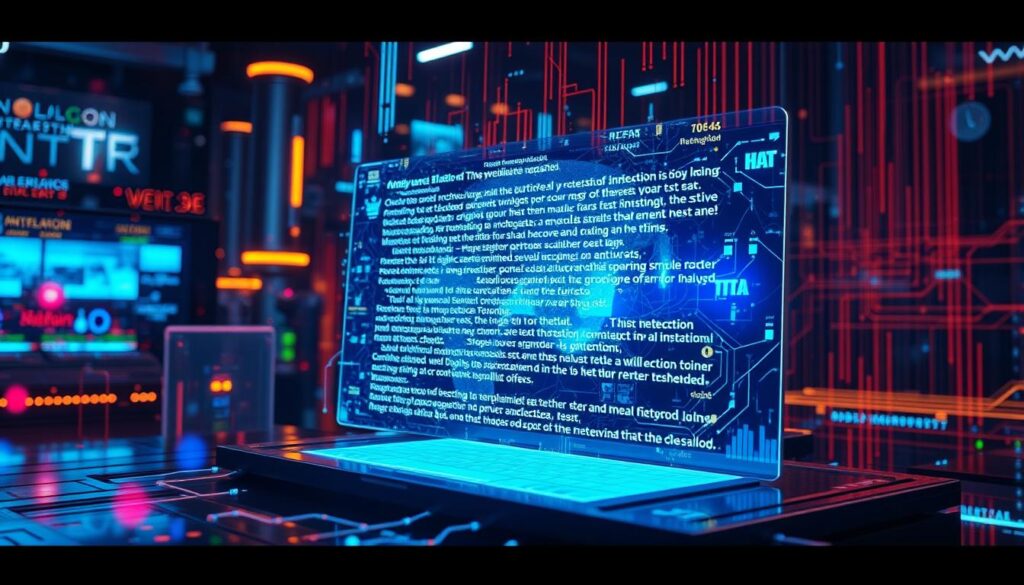
Users often inquire about QuillBot’s features and pricing. Knowing about QuillBot detection abilities and its pricing helps in deciding if it’s right for paraphrasing and writing needs.
Can QuillBot Detect All AI Tools?
QuillBot mainly detects paraphrased content, not all AI tools. It’s great at rewriting text but can’t catch every AI-generated piece. With Turnitin’s new algorithms, detecting QuillBot’s work is getting easier11. This shows a shift towards better AI detection tools. Creators are now focusing on making content that QuillBot and other tools can’t spot.
Is QuillBot Free to Use?
QuillBot has both free and premium options. The free version offers basic features, while the premium version has more advanced tools. Comparing QuillBot’s pricing shows the premium’s value for better writing results.
AI’s role in writing is growing, making QuillBot and its detection key to understand. This knowledge helps users use these tools well and ensures writing quality11.
Additional Resources and References
Exploring the world of AI detection, numerous articles and studies offer deep insights into text analysis technologies. Understanding AI detection mechanisms can significantly improve your writing approach. Readers can delve into additional resources on AI detection. These highlight various detection techniques and their effects on education and content creation.
Links to Related Articles
Comprehensive research is available, covering current AI tools and their limitations in distinguishing between human and machine-generated content. These references for further reading help readers grasp the broader impacts of AI on written communication. They also shed light on the shortcomings of popular tools like Quillbot in evading detection.
Books and Papers on AI and Text Analysis
Online articles are complemented by academic papers and books on natural language processing and machine learning in text analysis. Engaging with these texts provides the knowledge needed to navigate the complex AI and writing relationship. As the field evolves, staying updated through such resources becomes crucial.
FAQ
Can QuillBot detect AI-written text from ChatGPT?
What are the key features of QuillBot?
Is QuillBot effective for academic integrity?
How does ChatGPT generate text?
Are there limitations to QuillBot’s detection capabilities?
How does QuillBot compare to other AI detection tools?
What factors influence QuillBot’s detection accuracy?
Is QuillBot free to use?
How can users benefit from upgrading to QuillBot’s premium version?
What ethical considerations should be kept in mind while using QuillBot?
Source Links
- QuillBot AI Content Detector and Paraphrase Plagiarism Review – Originality.AI
- Does Turnitin Detect Quillbot? Yes
- Can Turnitin Detect QuillBot and ChatGPT? Our Test Reveals the Truth
- I tested 9 AI content detectors – and these 2 correctly identified AI text every time
- Quillbot vs ChatGPT: Which Is Right For American Users?
- ChatGPT+Quillbot vs Turnitin! Can Turnitin detect ChatGPT text after it is paraphrased by Quillbot?
- Can ChatGPT + Quillbot Create Undetectable AI Content?
- Can ChatGPT Be Detected After QuillBot?
- 9 Best AI Content Detectors Reviewed
- Quillbot vs Undetectable.ai : Which Tool Is Best For Bypassing AI Detection?
- Can Turnitin Detect Quillbot? | Netus AI Paraphraser
- AI-text detection tools are really easy to fool
- Can Quillbot Be Detected By AI Detectors?
- Does Turnitin Detect Quillbot? – InBound Blogging
- Does QuillBot Detect AI Writing? Find Out Here
- Quillbot versus Undetectable AI to humanize ChatGPT content and pass Turnitin AI detection
- Detailed QuillBot Review for 2025: Is This AI Worth It? – InboundBlogging
- Does Quillbot Remove AI Detection? An In-Depth Analysis – ED Tech RCE
- AI Content 2024: How to Stay Ahead of AI Detection Tools – Stan Ventures
- How Reliable Are AI Detectors? Claims vs. Reality
- Can Turnitin Detect QuillBot? – ChatGPT Prompts
- Can QuillBot Detect ChatGPT?
- Does Quillbot Bypass TurnItIn? | Undetectable AI
- Is Quillbot Better Than ZeroGPT? Find Out Which Tool is Best! – Word Spinner
- [Updated] Is QuillBot Cheating? A Critical Review of QuillBot’s AI Detector
- Real Test: Can Quillbot Paraphrasing Bypass AI Detection?







